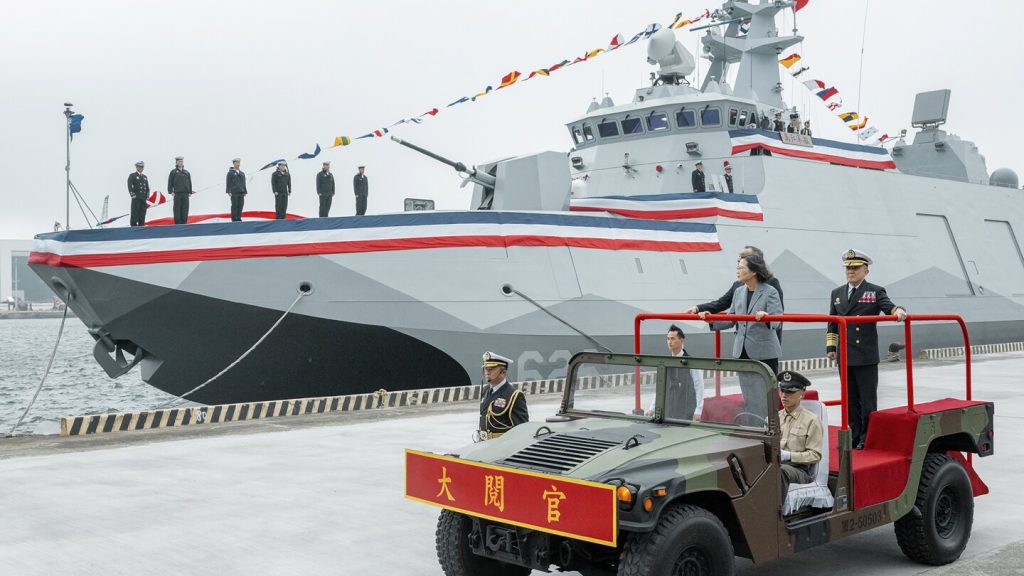Taiwan has commissioned two new navy ships as a safeguard against the rising threat from China. The pair of Tuo Chiang class corvettes completes the first order of six domestically produced catamarans with stealth capabilities. These ships are fast, highly maneuverable, and equipped with a range of missiles and deck guns aimed at countering larger Chinese vessels and rocketry. Outgoing President Tsai Ing-wen oversaw the commissioning, emphasizing her push to revitalize Taiwan’s defense industries and strengthen its military capabilities with support from the United States.
In addition to the new navy ships, Tsai has also fast-tracked the production of trainer jets and Taiwan’s first homebuilt submarines. These efforts have sometimes faced resistance from representatives of the opposition Nationalist Party, which favors eventual unification with China. Ma Ying-jeou, the last president from the Nationalists, is reportedly planning a visit to China next month, potentially including a meeting with Communist Party leader Xi Jinping. Taiwan has a complex history, having been colonized by China in the 1600s, taken over by Japan, and eventually reverting to the Republic of China before splitting amid the Chinese Civil War in 1949.
China, led by Xi Jinping, has been expanding its military capabilities with a focus on consolidating territorial claims in the Pacific, the South China Sea, and along the border with India. While boasting the world’s largest standing military and navy, China has not engaged in a major conflict since 1979. Recent frictions between patrol vessels near Taiwan-controlled islands off the Chinese coast have raised concerns about a potential conflict that could involve the U.S., which is obligated to ensure Taiwan’s defense. Taiwan’s military has been bolstered by new weaponry and an extension of national service, responding to daily incursions by Chinese ships and planes.
Taiwan’s Defense Ministry is on high alert for a possible Chinese sneak attack, with concerns about potential targets including outgoing President Tsai and Vice President William Lai, who is set to take over in May. Both leaders are seen as separatists by Beijing. Recent satellite photos have shown Chinese military training grounds with mock-ups of Taipei’s Presidential Office Building neighborhood. The Defense Ministry detected multiple Chinese planes and ships operating around the island, indicating ongoing tensions between the two sides. In response, Beijing criticized Taiwan’s planned live-firing exercises near the Taiwan-held island group of Kinmen, calling any provocative actions by Taiwan’s military doomed to fail.
The ongoing military build-up and tensions between Taiwan and China highlight the complex dynamics in the region, with the potential for a conflict that could involve the United States. Taiwan’s efforts to strengthen its defense capabilities and enhance its military readiness reflect the island’s determination to defend itself against any threats from China. As both sides navigate longstanding territorial disputes and historical tensions, the international community watches closely to see how the situation will unfold and whether diplomatic efforts can de-escalate the risk of conflict in the region.


